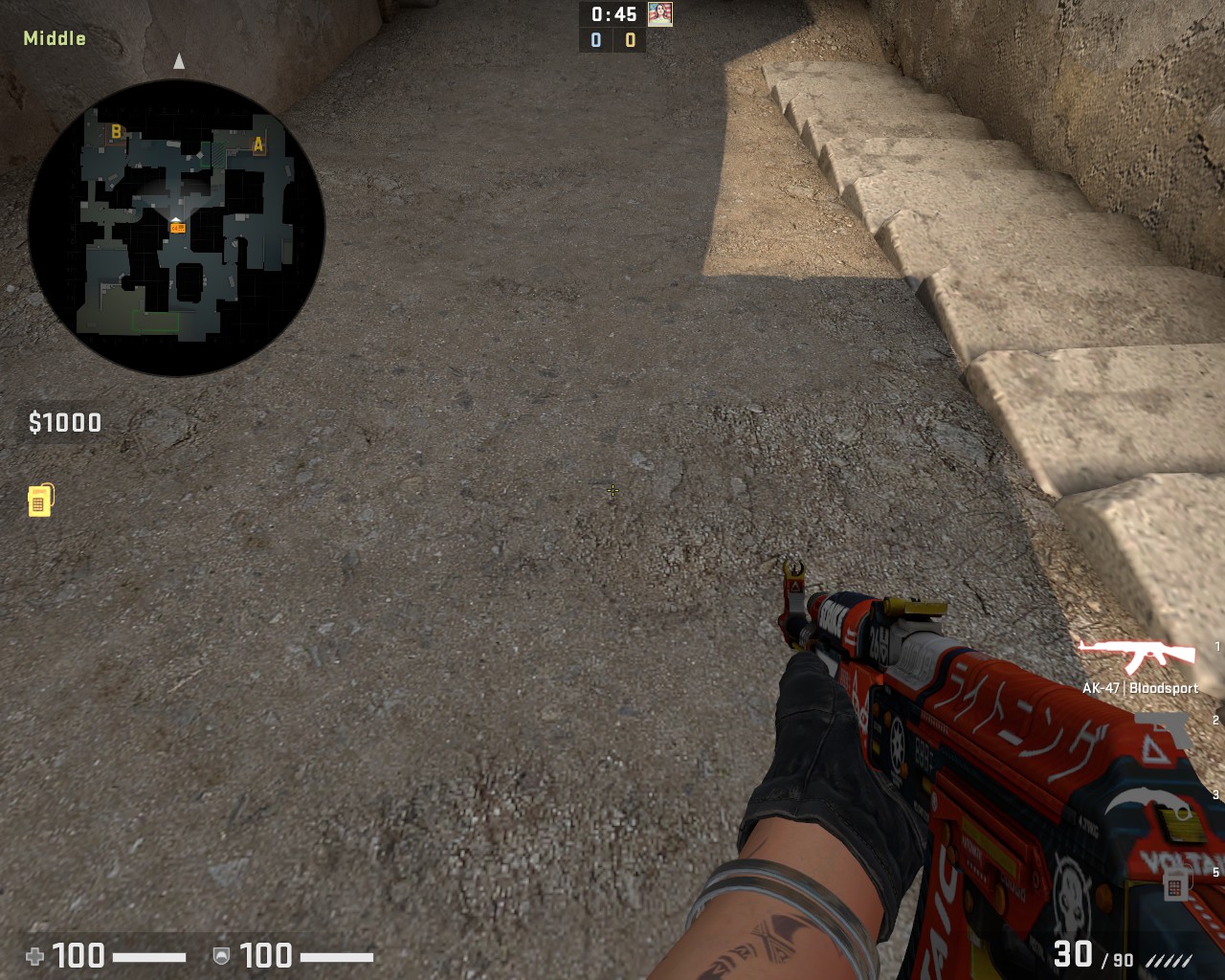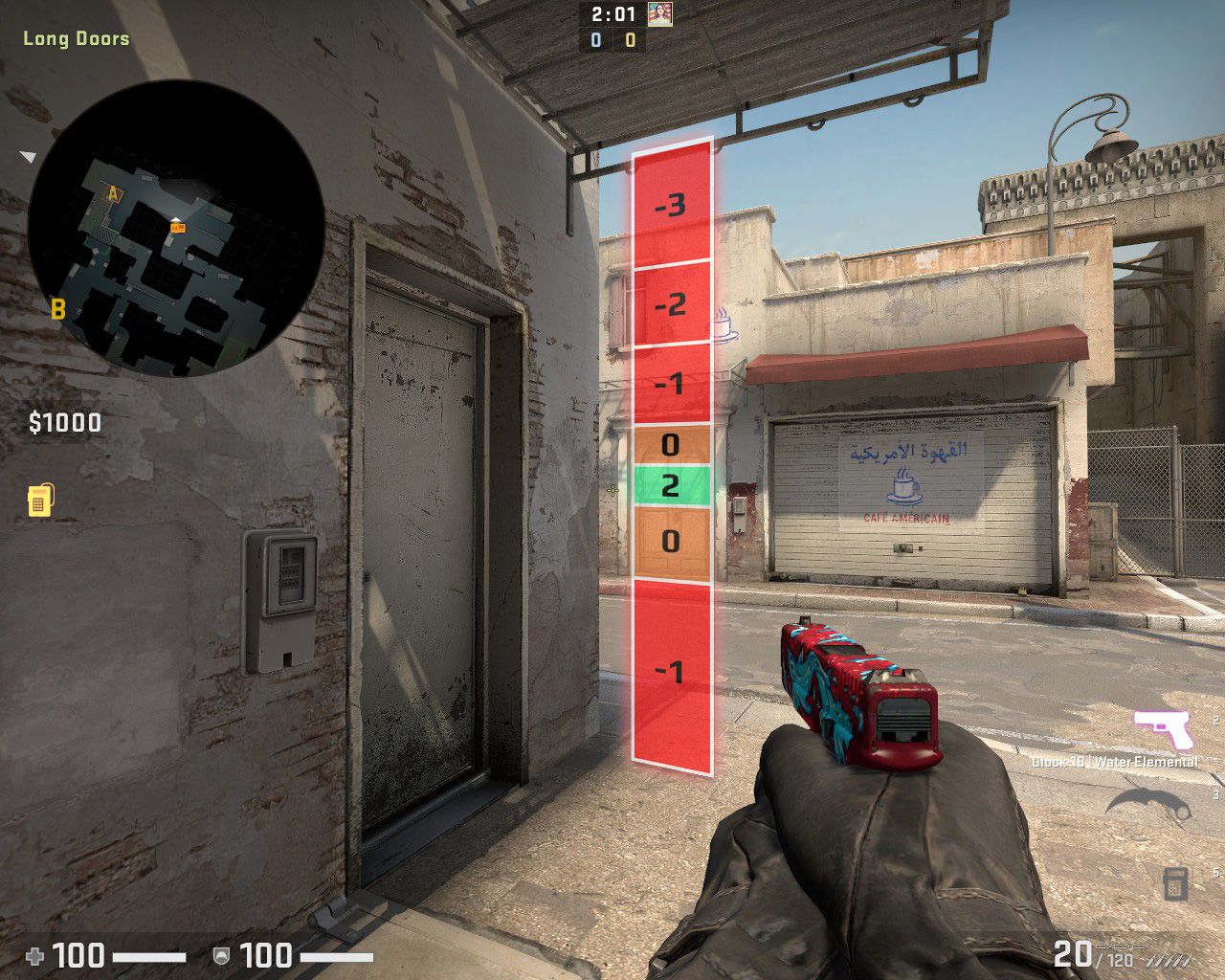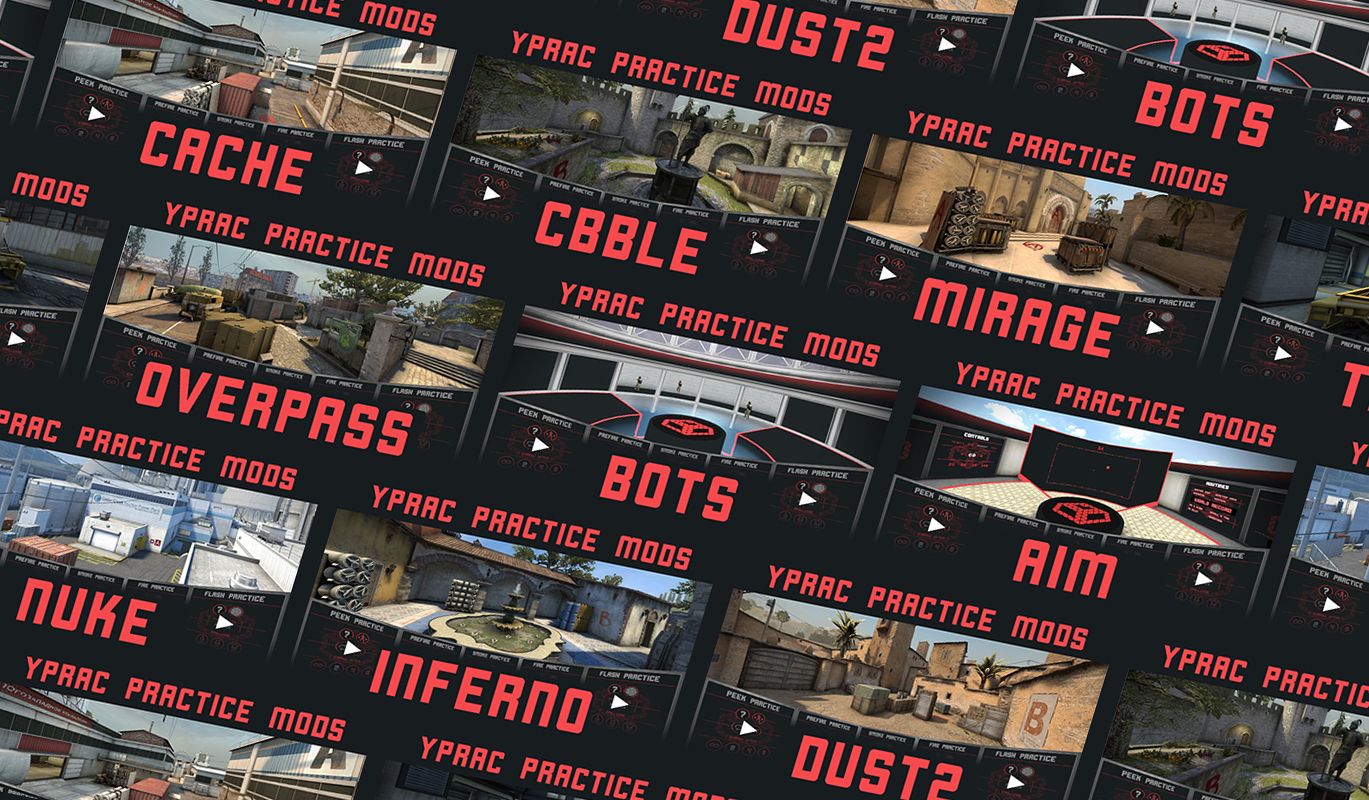Crosshair placement. Basic principles
It's no secret that in CS2, as in most shooters, crosshair plays a key role. A good reaction time helps to aim at the enemy. However, good reaction times and reflexes aren't enough for a successful game and development of a player's skills. This is where correct crosshair placement comes to the rescue.
In simple terms, crosshair placement is placing your crosshair in almost any position that intersects with an enemy's model. Ideally, the crosshair should always be on an enemy's head, which will increase the probability of you killing them first.
To master your crosshair placement, it's important to remember about reducing the distance that must be done in order to aim at the enemy’s head. Most CS2 players have the so-called "lazy crosshair syndrome" - they do not think about the position of their crosshair and when they collide with an enemy they waste precious seconds to kill, which minimizes the chances of success in a firefight. You can see typical mistakes on the screenshots down below.


Remember how you got upset after getting killed by one bullet from the enemy's gun.
The essence of correct crosshair placement is based on several basic principles, the main of which is the “closest angle” rule - the sight must always cling to the closest angle, from behind which the enemy can come out. As a result, you will always be ready to hit the enemy first.
Using our stats, you can improve other game skills as well.
Let's look at all other principles of correct crosshair placement:
1) Always try to keep the crosshair at the level of the enemy's head
While moving around the map and checking corners, try to keep the crosshair at the same level, avoiding blind spots in which the enemy cannot be - floor, ceiling / sky and other objects. It is impossible to remember the position of the head in all places on the map, so use the conditional division of your screen into several zones. In the screenshot, you can clearly see that the position of the sight in zones 0 and -2 will bring the greatest efficiency. Using this principle, you can greatly simplify the subsequent aiming at the enemy.

2) Check the angles by positioning the crosshair in the correct horizontal line.
When checking positions or corners, keep the crosshair in the correct horizontal line. Usually, such lines determine the location of the opponent's head or torso. Remember that the trajectory of enemy movement also affects the crosshair placement. So, by keeping this principle you can also reduce aiming time.
3) Avoid sudden movements when aiming.
You’ve correctly identified the possible position of the opponent's head or torso, but something went wrong? Remember that sudden movements also affect shooting. In order to avoid that, try to lower the mouse sensitivity in the game. This simple change can help at the right time.
Don't forget to practice!
Good practice plays a huge role in correct crosshair placement.
• The good old Deathmatch and Retake modes are the best way of intuitive training. Here you can hone the skills of aiming at the enemy's head in completely different positions in the shortest possible time. This type of training will help you feel more confident in competitive play later on.
• Another way of training can be special maps that can be found in Workshop, for example, Yprac. On these maps, you can practice prefiring - shooting at the supposed locations of the enemy around the corner / box / barrels / doors before exiting. Maps have functionality that places bots in the most frequent positions where the enemy appears. This kind of training will definitely be beneficial in a real game situation.
 Yprac maps
Yprac maps• Do not forget to watch demos of professional players. Download a demo of your favorite players and try to watch how he sets the crosshair during the round. Watching a demo will help you analyze your own technique, improve it and bring it to perfection.
Correct crosshair placement will help you significantly improve your skills and feel even more confident in-game. Remember the most important principles and try to follow them, learn the technique and practice. The effort spent reading this text and practicing shooting will pay off after another important kill. Get to training!
